
Products 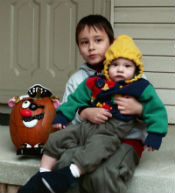 Did you know that Mr. Potato Head is both a toy and an app? This toy is a fun, inexpensive way to introduce concepts of facial features and other identifying features such as shoes, earrings and hats. Individuals with face-blindness need to learn how to identify friends and family by features other than the face.
Did you know that Mr. Potato Head is both a toy and an app? This toy is a fun, inexpensive way to introduce concepts of facial features and other identifying features such as shoes, earrings and hats. Individuals with face-blindness need to learn how to identify friends and family by features other than the face.
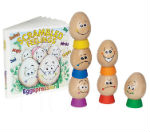 Eggspressions is a set of six wooden eggs, each with a different emotional expression, and a storybook titled “Scrambled Feelings.” Therapists and parents use the eggs to help children find words for their feelings and learn how to imitate the faces to express their feelings.
Eggspressions is a set of six wooden eggs, each with a different emotional expression, and a storybook titled “Scrambled Feelings.” Therapists and parents use the eggs to help children find words for their feelings and learn how to imitate the faces to express their feelings.
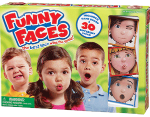 The Funny Faces game is a simplified version of charades. One player makes a face to match a picture card, and the other players guess which face it is. This game is great for group speech therapy, social skills groups or a family game night at home.
The Funny Faces game is a simplified version of charades. One player makes a face to match a picture card, and the other players guess which face it is. This game is great for group speech therapy, social skills groups or a family game night at home.
The Feelings in a Jar game is another charades game, but it’s aimed at ages 8 and up - many of the emotions are beyond the grasp of younger children.
 The Melissa and Doug Expressions Stampers have 8 simple faces on foam stamps that can be used to decorate craft projects and stories.
The Melissa and Doug Expressions Stampers have 8 simple faces on foam stamps that can be used to decorate craft projects and stories.
The Way I Feel by Janan Cain names seven different emotions and gives a brief, specific example for each one, accompanied by a colorful illustration. This book is a simple way to open up the door to verbalizing emotions.
My Many Colored Days by Dr. Seuss associates 11 colors with a full range of emotions. This approach is helpful to people like my son who think and speak in metaphorical terms, not in literal terms.
LinguiSystems, a publisher of materials for speech therapy, has workbooks on emotion for elementary students and adolescents, intended for a group therapy setting.
The “How I Feel” series by Marcia Leonard made a big impression on both of my sons. Each book in the series focuses on one emotion with everyday examples and solutions. The text is simple and straightforward - and instantly relatable.
Most of my son’s speech therapists have used the Webber Photo Cards to teach emotion recognition. The main problem with cartoons or simplified facial expressions is that they are too abstract and do not look like real human faces. The benefits of using the photo cards are that they show subtle changes on real faces, they are easier to imitate than cartoons and they can be used for all kinds of open-ended activities. The problem with the photo cards is that some of the facial expressions are so versatile that most adults can’t even figure out which emotion is being expressed!
Language Builder Emotion Cards by Stages Learning Materials have 40 cards showing models against a white background with various emotional expressions and 40 cards showing models in emotion-provoking situations, such as visiting Grandma or not wanting to eat broccoli. These scenario cards offer a more realistic way to identify people and situations for those who have difficulty with faces.
Little Folks Visuals makes an emotion set for felt boards with photos printed onto felt and accompanying single word labels. The set comes with an activity guide and a song about feelings.
LinguiSystems offers Basic Emotion Recognition Interactive Software, a program that teaches five emotions (happiness, sadness, fear, anger and surprise) through repetition.
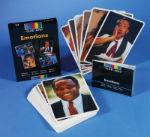 Speechmark Publications ColorCards - Feelings and Speechmark Publications Colorcards - Emotion Sequences are both sets of 48 photographic cards showing children and adults in real-life situations. Each image invites open-ended storytelling to understand the context of emotion.
Speechmark Publications ColorCards - Feelings and Speechmark Publications Colorcards - Emotion Sequences are both sets of 48 photographic cards showing children and adults in real-life situations. Each image invites open-ended storytelling to understand the context of emotion.
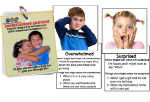 Natural Learning Concepts makes the Understanding Emotions set of cards for elementary students. Each card has a photo of a child’s face and a brief explanation of what the emotion is, how it feels and a few examples of when people experience that emotion.
Natural Learning Concepts makes the Understanding Emotions set of cards for elementary students. Each card has a photo of a child’s face and a brief explanation of what the emotion is, how it feels and a few examples of when people experience that emotion.
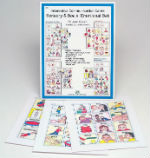 For individuals who communicate with PECS or other picture cards, the School Specialty Sensory and Social-Emotional Interactive Communication Cards are standard 2 x 2 inch images that will fit right into the notebook you already use. Have you found tools to help you or your loved one learn how to recognize facial expressions? Please share your great finds in the comments below!
For individuals who communicate with PECS or other picture cards, the School Specialty Sensory and Social-Emotional Interactive Communication Cards are standard 2 x 2 inch images that will fit right into the notebook you already use. Have you found tools to help you or your loved one learn how to recognize facial expressions? Please share your great finds in the comments below!
16 Great Products for Learning Emotion Recognition
Parents, therapists and educators who buy emotion flash cards have high hopes. Face-blindness and an inability to recognize emotions are factors in some cases of brain injury, autism and other neurological conditions. At this time, there is no known treatment for face-blindness, and results from teaching emotion recognition have been inconsistent. But we can still support our loved ones in these areas by teaching compensation strategies, modeling recognition behavior and learning the pre-requisites to emotion recognition, such as:- Learning and naming the parts of the human face
- Learning that different people have different features
- Learning that people carry many clues to their identity in and around the face
- Learning that faces are important and that expressions communicate information
- Learning that expressions change as emotions change
Emotion Recognition Toys and Games
1. Mr. Potato Head
 Did you know that Mr. Potato Head is both a toy and an app? This toy is a fun, inexpensive way to introduce concepts of facial features and other identifying features such as shoes, earrings and hats. Individuals with face-blindness need to learn how to identify friends and family by features other than the face.
Did you know that Mr. Potato Head is both a toy and an app? This toy is a fun, inexpensive way to introduce concepts of facial features and other identifying features such as shoes, earrings and hats. Individuals with face-blindness need to learn how to identify friends and family by features other than the face.
2. Eggspressions
 Eggspressions is a set of six wooden eggs, each with a different emotional expression, and a storybook titled “Scrambled Feelings.” Therapists and parents use the eggs to help children find words for their feelings and learn how to imitate the faces to express their feelings.
Eggspressions is a set of six wooden eggs, each with a different emotional expression, and a storybook titled “Scrambled Feelings.” Therapists and parents use the eggs to help children find words for their feelings and learn how to imitate the faces to express their feelings.
3. Funny Faces
 The Funny Faces game is a simplified version of charades. One player makes a face to match a picture card, and the other players guess which face it is. This game is great for group speech therapy, social skills groups or a family game night at home.
The Funny Faces game is a simplified version of charades. One player makes a face to match a picture card, and the other players guess which face it is. This game is great for group speech therapy, social skills groups or a family game night at home.
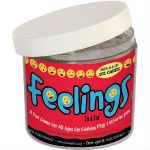 4. Feelings In A Jar
4. Feelings In A Jar
The Feelings in a Jar game is another charades game, but it’s aimed at ages 8 and up - many of the emotions are beyond the grasp of younger children.
5. Expression Stampers
 The Melissa and Doug Expressions Stampers have 8 simple faces on foam stamps that can be used to decorate craft projects and stories.
The Melissa and Doug Expressions Stampers have 8 simple faces on foam stamps that can be used to decorate craft projects and stories.
Emotion Recognition Books
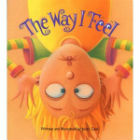 1. The Way I Feel
1. The Way I Feel
The Way I Feel by Janan Cain names seven different emotions and gives a brief, specific example for each one, accompanied by a colorful illustration. This book is a simple way to open up the door to verbalizing emotions.
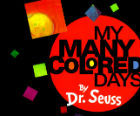 2. My Many Colored Days
2. My Many Colored Days
My Many Colored Days by Dr. Seuss associates 11 colors with a full range of emotions. This approach is helpful to people like my son who think and speak in metaphorical terms, not in literal terms.
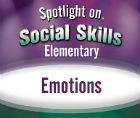 3. LinguiSystems Workbooks
3. LinguiSystems Workbooks
LinguiSystems, a publisher of materials for speech therapy, has workbooks on emotion for elementary students and adolescents, intended for a group therapy setting.
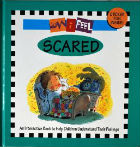 4. How I Feel Series
4. How I Feel Series
The “How I Feel” series by Marcia Leonard made a big impression on both of my sons. Each book in the series focuses on one emotion with everyday examples and solutions. The text is simple and straightforward - and instantly relatable.
Emotion Recognition Cards and Visual Aids
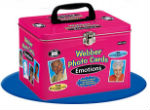 1. Webber Photo Cards
1. Webber Photo Cards
Most of my son’s speech therapists have used the Webber Photo Cards to teach emotion recognition. The main problem with cartoons or simplified facial expressions is that they are too abstract and do not look like real human faces. The benefits of using the photo cards are that they show subtle changes on real faces, they are easier to imitate than cartoons and they can be used for all kinds of open-ended activities. The problem with the photo cards is that some of the facial expressions are so versatile that most adults can’t even figure out which emotion is being expressed!
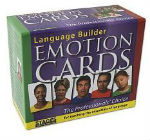 2. Language Builder Emotion Cards
2. Language Builder Emotion Cards
Language Builder Emotion Cards by Stages Learning Materials have 40 cards showing models against a white background with various emotional expressions and 40 cards showing models in emotion-provoking situations, such as visiting Grandma or not wanting to eat broccoli. These scenario cards offer a more realistic way to identify people and situations for those who have difficulty with faces.
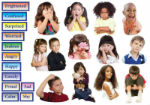 3. Little Folks Visuals
3. Little Folks Visuals
Little Folks Visuals makes an emotion set for felt boards with photos printed onto felt and accompanying single word labels. The set comes with an activity guide and a song about feelings.
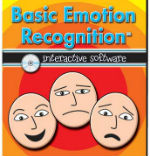 4. Emotion Software
4. Emotion Software
LinguiSystems offers Basic Emotion Recognition Interactive Software, a program that teaches five emotions (happiness, sadness, fear, anger and surprise) through repetition.
5. ColorCards - Feelings and Emotion Sequences
 Speechmark Publications ColorCards - Feelings and Speechmark Publications Colorcards - Emotion Sequences are both sets of 48 photographic cards showing children and adults in real-life situations. Each image invites open-ended storytelling to understand the context of emotion.
Speechmark Publications ColorCards - Feelings and Speechmark Publications Colorcards - Emotion Sequences are both sets of 48 photographic cards showing children and adults in real-life situations. Each image invites open-ended storytelling to understand the context of emotion.
6. Understanding Emotions
 Natural Learning Concepts makes the Understanding Emotions set of cards for elementary students. Each card has a photo of a child’s face and a brief explanation of what the emotion is, how it feels and a few examples of when people experience that emotion.
Natural Learning Concepts makes the Understanding Emotions set of cards for elementary students. Each card has a photo of a child’s face and a brief explanation of what the emotion is, how it feels and a few examples of when people experience that emotion.
7. PECS Cards
 For individuals who communicate with PECS or other picture cards, the School Specialty Sensory and Social-Emotional Interactive Communication Cards are standard 2 x 2 inch images that will fit right into the notebook you already use. Have you found tools to help you or your loved one learn how to recognize facial expressions? Please share your great finds in the comments below!
For individuals who communicate with PECS or other picture cards, the School Specialty Sensory and Social-Emotional Interactive Communication Cards are standard 2 x 2 inch images that will fit right into the notebook you already use. Have you found tools to help you or your loved one learn how to recognize facial expressions? Please share your great finds in the comments below! 


